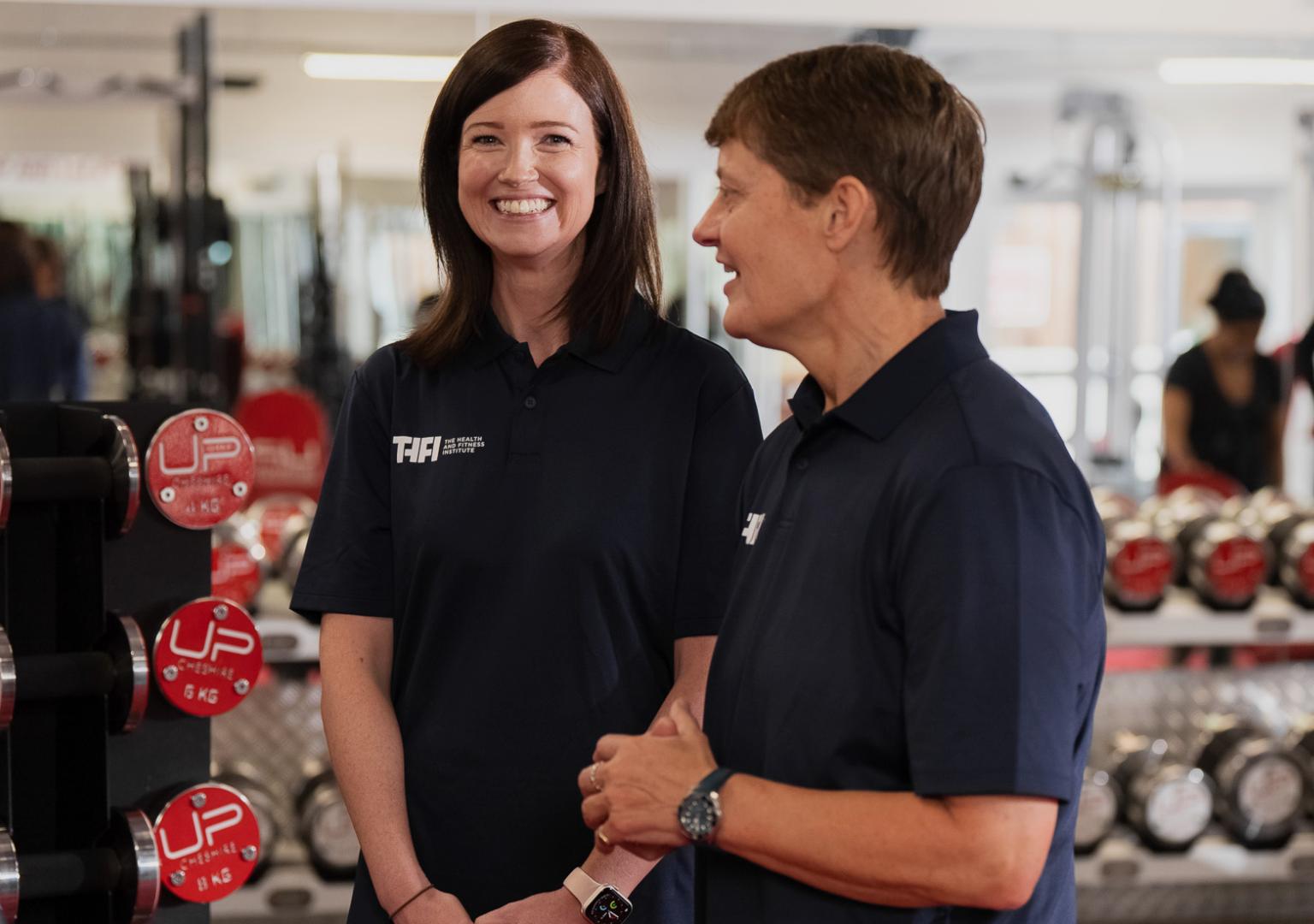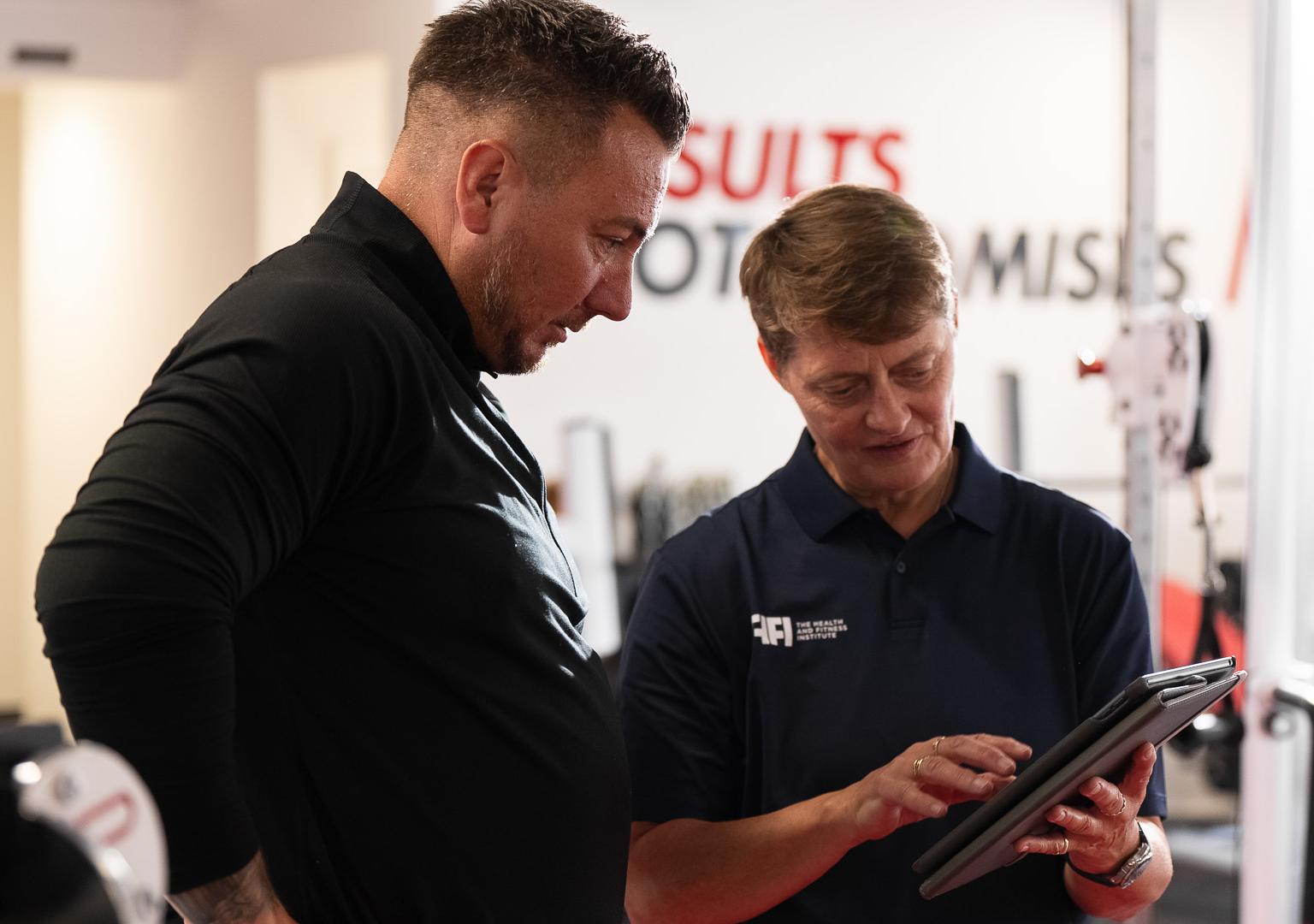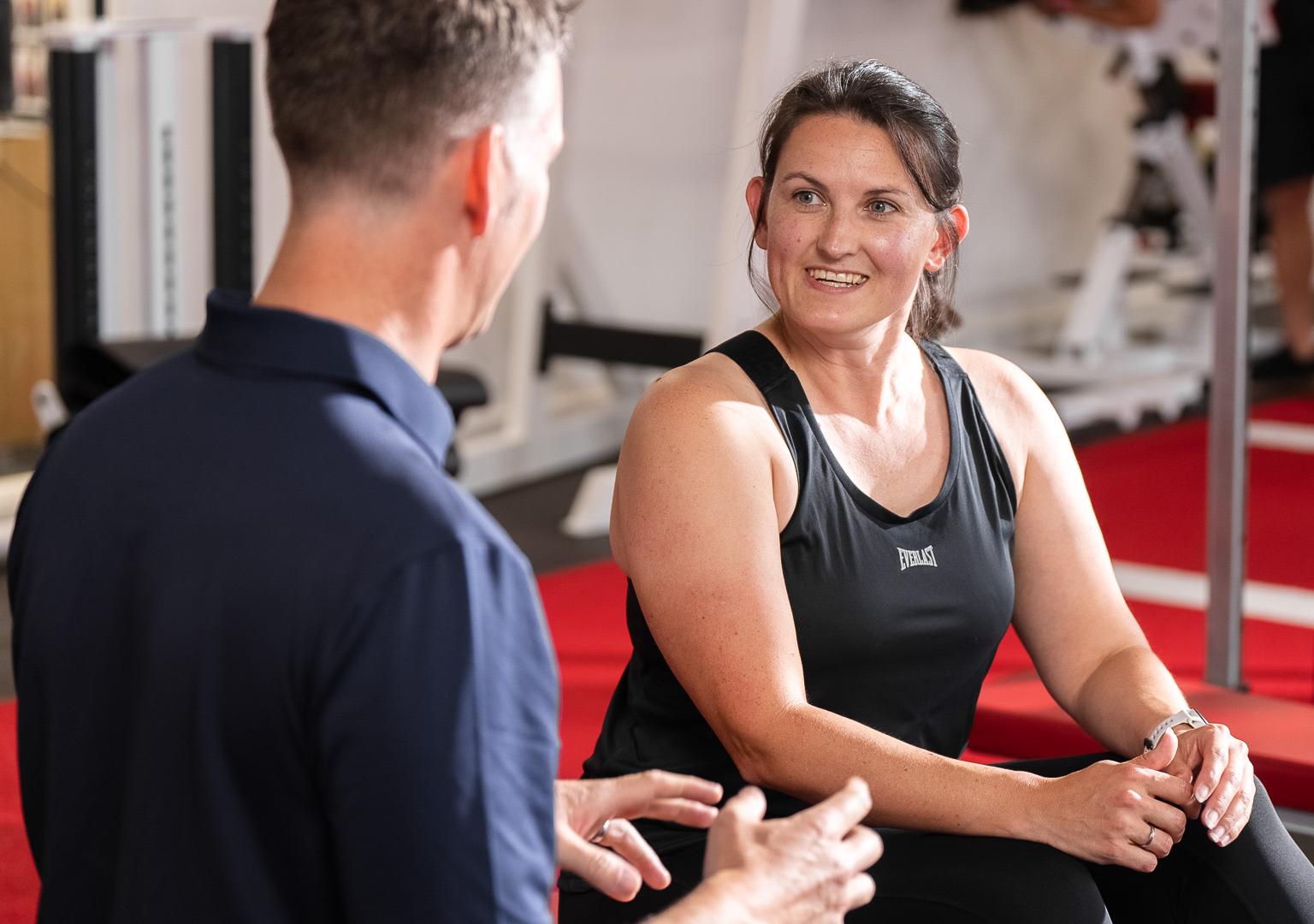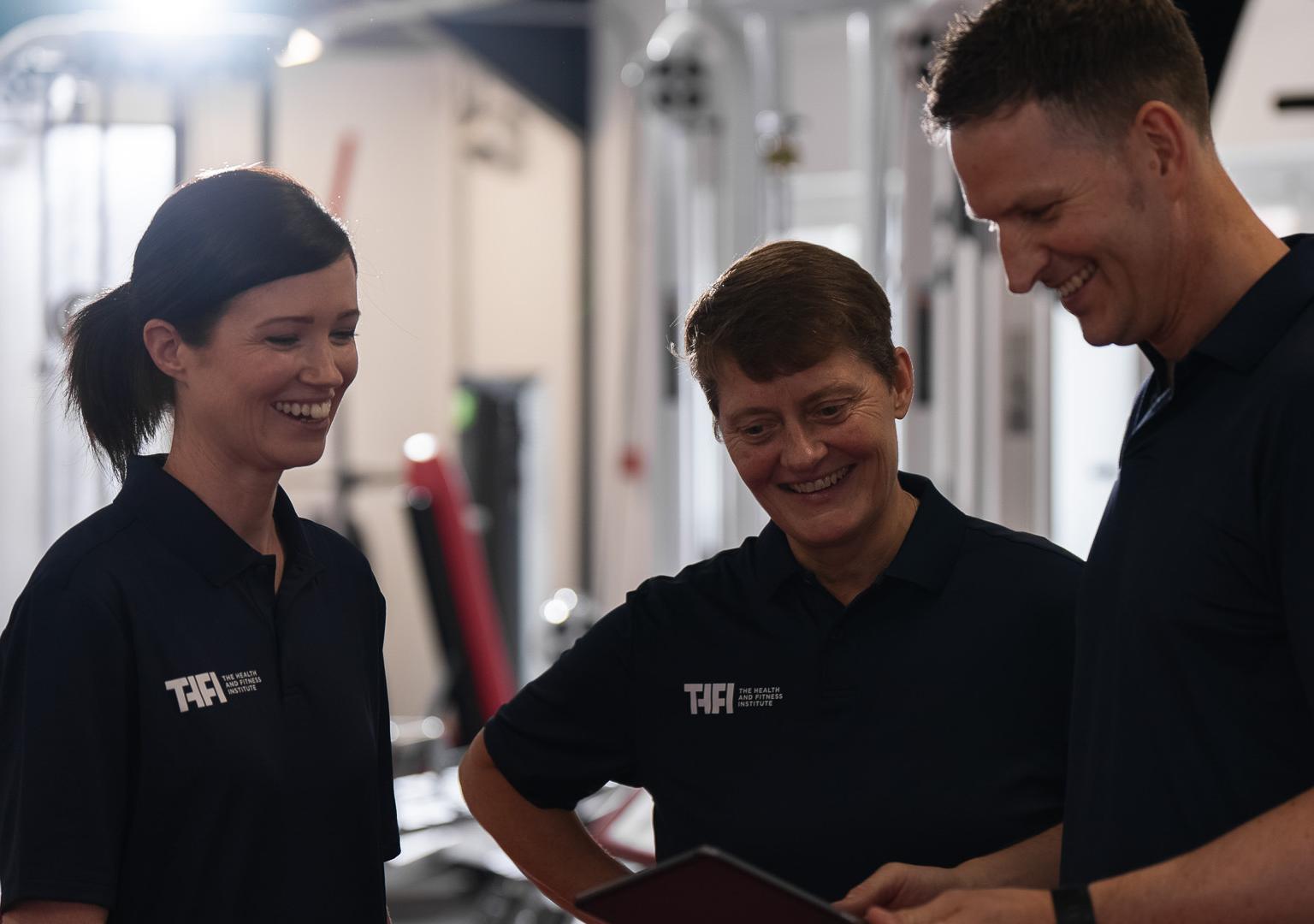15 Easy Marketing Strategies For Personal Trainers

Are you wondering why some personal trainers thrive while others struggle to get noticed?
Look at ‘celebrity trainers’ like Joe Wicks or James Smith, and you’ll see that standing out requires more than just expertise; it demands smart and strategic marketing.
But how do you get started, and what tactics will actually drive results for your PT business in today’s highly competitive market?
The reality is that many personal trainers overlook the power of effective marketing, focusing solely on their training regimens.
However, the landscape is shifting, and those who don't adapt are left behind. Your ability to market yourself could be the difference between a burgeoning client list and stagnation.
This articles gives you a great starting point for marketing ideas you can take and run with for your own personal training business to win more clients and earn a bigger paycheck.
It shows you how to understand your client demographic, use digital tools to target them, drive more business with community building, referrals, and other networking strategies, and track the effectiveness of your efforts.
Everything you need to know to get started is in here...
1. Define Your Target Audience
Understanding who your services are tailored for is the cornerstone of effective marketing. Begin by identifying key demographics of your potential clients such as age, gender, fitness level, and even lifestyle choices. Are they busy professionals looking for quick workouts? Parents who prefer family-friendly fitness routines? Or perhaps retirees interested in maintaining their health? Recognising these aspects allows you to tailor your marketing messages to resonate deeply with the right audience, thus significantly increasing the likelihood of conversion and client loyalty.
Why it's important: Tailored marketing ensures that your messages reach the people most likely to respond. This relevance boosts engagement, increases your conversion rates, and ultimately, maximises your return on investment in marketing efforts.
2. Explore Local Fitness Trends
Stay abreast of fitness trends within your community. Whether it's a surge in popularity of HIIT workouts, yoga, or outdoor boot camps, understanding these trends can help you align your services with what's current and in demand. Use local community boards, social media groups, and fitness forums to gauge interest, and consider attending local health and wellness events to connect directly with the community.
Why it's important: Aligning your services with local trends not only increases your appeal to prospective clients but also positions you as a relevant and informed trainer in your local fitness community. This can help boost client retention, as people see that you're knowledgeable and up-to-date with what's working in the fitness realm.
3. Develop a Compelling Website
A website is the shop window to your business. Invest in creating a clear, visually appealing, and navigable site that reflects your personal training style and philosophy. Include essential elements such as your training services, success stories, easy-to-find contact information, and perhaps a blog with helpful fitness tips. Ensure that the website is mobile-friendly, as a significant amount of web browsing occurs on mobile devices.
Why it's important: Your website is often the first impression potential clients will have of your services. A professional, engaging site can be a deciding factor for someone choosing their next personal trainer. It's your opportunity to showcase your expertise, share client testimonials, and provide compelling reasons for visitors to choose you over competitors.
4. Implement Basic SEO Practices
Search Engine Optimisation (SEO) can seem daunting, but basic SEO is essential for any personal trainer aiming to be visible online. Start by optimising your website content with relevant keywords that potential clients might use to search for training services, such as "personal trainer [Your City]" or "best HIIT classes near me." Additionally, ensure your site is indexed by search engines by submitting your site map to Google Search Console. Regularly update your blog with fresh content that addresses common fitness questions or concerns, which can also help improve your SEO ranking.
Why it's important: Improved SEO rankings lead to greater visibility in search results, which naturally attracts more organic traffic to your site. This increase in visitors not only boosts your potential client base but also establishes your authority in the fitness industry.
5. Utilise Social Media Effectively
Social media is a powerful tool for personal trainers to build a community and engage with clients. Choose platforms that align best with your target audience; for instance, Instagram and YouTube are great for visual and instructional content, while Facebook and Twitter are ideal for community engagement and quick updates. TikTok might be better if you’re targeting a younger demographic. Post regularly and mix your content to include tips, success stories, client testimonials, and live Q&A sessions to keep your audience engaged and informed.
Why it's important: Effective use of social media helps build your brand’s visibility and allows direct interaction with current and potential clients. It serves as a platform for promoting your services, sharing useful content, and establishing your credibility as a fitness expert.
6. Engage in Community Networking
Build your professional network by engaging with local businesses and community groups. Attend community events, workshops, and seminars, or even organise your own. Collaborate with local healthcare providers, nutritionists, and other fitness professionals to create referral networks. These relationships can lead to joint marketing efforts, increasing your visibility and credibility.
Why it's important: Networking within your community can lead to valuable partnerships and referrals, which expand your client base. It also increases your visibility in the local market, making you a go-to fitness expert in your area.
7. Form Strategic Partnerships
Identifying and collaborating with other businesses can significantly boost your personal training business. Look for partnerships that complement your services, such as local health food stores, wellness clinics, or even corporate offices that might benefit from workplace wellness programs. When proposing a partnership, focus on how it can be mutually beneficial, like offering exclusive discounts to each other's clients or co-hosting fitness events.
Why it's important: Strategic partnerships extend your reach beyond your immediate network and open up new channels for client acquisition. These collaborations can also enhance your credibility and increase your market presence by associating with established brands.
8. Leverage Print and Local Ads
While digital marketing is crucial, don’t overlook the power of traditional print and local advertising. Utilise local newspapers, magazines, community bulletins, and even local radio stations to advertise your services. Tailor your ads to highlight the unique benefits of your training programs and include a clear call to action. Consider where your target audience might frequently visit and place your ads strategically in those locations.
Why it's important: Print and local ads can reach demographics that are less prevalent online and tap into the local community more directly. This form of advertising can capture a different segment of your market, especially those in local surroundings who might prefer traditional methods of communication.
9. Customise Client Interactions
Personalising your interactions with clients can significantly enhance their experience and loyalty. Use client data wisely to remember important details such as their fitness goals, personal milestones, and session preferences. Tailor communication and updates to fit their individual progress and interests. For example, send personalised emails or messages that acknowledge their achievements or offer custom tips that can help them in their specific fitness journey.
Why it's important: Customised interactions not only make your clients feel valued and understood but also increase client retention rates. Personal touches demonstrate your commitment and attention to detail, which are highly valued in the service industry and can differentiate your business from the competition.
10. Start a Client Referral Program
Implementing a client referral program is a powerful way to leverage the trust and satisfaction of your existing client base. Begin by designing a simple, attractive referral scheme that rewards both the referrer and the new client. For example, offer a free training session or a discount on their next subscription for each successful referral. Make sure to communicate this program clearly to your clients through emails, social media, and during training sessions, and encourage them to share their positive experiences with friends and family.
Why it's important: Word-of-mouth is a highly effective marketing tool because it comes with built-in trust. Referral programs can generate high-quality leads more effectively than many traditional marketing methods, as new clients come already having a positive impression of your services from someone they trust.
11. Foster Client Community
Building a strong community among your clients can significantly enhance client satisfaction and retention. Create and foster a supportive environment that encourages interaction among clients. This can be achieved through social media groups, client-only events, or fitness challenges that encourage group participation. Initiatives like this help clients feel more connected to each other and to your brand, creating a loyal community around your business.
Why it's important: A strong community feel within your client base can set you apart from competitors. It enhances client engagement and loyalty, making your clients more likely to stick with your training over time and recommend your services to others.
12. Organise Fitness Workshops and Events
Hosting workshops and events is an excellent way to establish yourself as a thought leader in the fitness industry. Plan and execute events that can attract both current clients and new prospects, such as public fitness classes, health and wellness seminars, or even participation in local charity runs. These events should highlight your expertise and approach to fitness, offering something of value to attendees while also showcasing your training skills.
Why it's important: Events are not just great for publicity; they also provide a platform for direct interaction with potential new clients. Attendees get a firsthand experience of what it’s like to work with you, which can be a decisive factor for them to sign up for more regular sessions. Events also strengthen your community by bringing people together and can significantly raise your profile within the local area.
These strategies not only help in expanding your client base but also deepen the existing client relationships, creating a robust framework for sustainable business growth.
13. Try using AI for Advanced Marketing Insights and Personalisation
You can use artificial intelligence (AI) to enhance your marketing strategies and personalise client interactions in your business. AI can analyse large datasets to uncover patterns and insights about client preferences and behaviors, enabling you to create highly targeted marketing campaigns.
Additionally, AI tools can automate and optimise your email marketing, social media posts, and online advertising, ensuring that your messages reach the right audience at the optimal time. By integrating AI into your marketing efforts, you can deliver personalised content and offers that resonate with individual clients, increasing engagement and conversion rates.
Why it's important: AI-driven marketing allows for precision targeting and personalisation that would be too difficult and time-consuming on your own . With AI, you can automate routine tasks, saving time while also improving the effectiveness of your marketing efforts. This leads to higher engagement, increased client loyalty, and ultimately, more effective use of your marketing budget. AI can also provide predictive insights, helping you anticipate market trends and client needs, allowing you to adapt your marketing strategies proactively.
14. Commit to Ongoing Education
This might not seem like a ‘marketing strategy’, but continuous learning and building your skills will indirectly help your marketing efforts.
Dedicate time to further your education through additional certifications, workshops, or conferences. Stay updated on the latest fitness trends, training methods, and health research to ensure your training programs remain relevant and effective. Sharing this knowledge not only benefits your clients but also reinforces your reputation as an expert in your field. Marketing.
Why it's important: Ongoing education not only enhances your training capabilities but also builds trust and credibility with your clients. It shows that you are committed to excellence and are well-equipped to adapt to new challenges and client needs.
15. Track and Adjust Your Marketing Efforts
Implementing marketing strategies is just the beginning; monitoring their effectiveness is crucial to understanding what works and what doesn’t. Use tools like Google Analytics to track website traffic, engagement on social media, and conversion rates. Regularly review the performance of different marketing channels and be ready to adjust your tactics based on these insights. This might mean reallocating your budget or time towards more effective channels or tweaking your messaging for better engagement.
Why it's important: Regular assessment of your marketing strategies helps optimize your resource allocation and maximises return on investment (ROI). This continuous improvement cycle ensures that your marketing efforts remain effective and responsive to changes in market conditions and client preferences.








